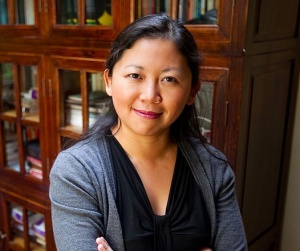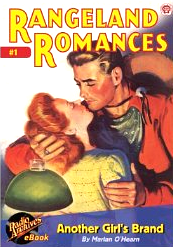When my older sister Maryann was a teenager, she used to hide books she thought our mother wouldn’t approve of between her mattress and box spring. For me, that little space, which I discovered looking for something under Maryann’s bed one day, became my private cache of contraband. I found some of the most memorable books of my life there.
One I filched to read was Gidget, by Frederick Kohner. I must have been about 10 at the time. Perhaps you have seen the 1959 movie, with Sandra Dee, or the TV series, with Sally Field. Gidget, the book and the movie, exposed mainstream America for the first time to the surf culture of Southern California.

Kathy Kohner was pictured on the cover of this early copy of her dad’s book
The book was edgier than the movie, and the TV show was a wraith of the original story (though it did resurrect some characters from the novel). But even in the book, Gidget was a nice, middle-class girl. In fact, that was part of the story’s tension.
Gidget, subtitled The Little Girl With the Big Ideas, gave me some big ideas as well. The title character was an inspiration at a time when girls like me were growing up without many assertive role models.
Gidget was spunky and intense, and she made me want to get out there and pursue my dreams, which at the time I had yet to formulate. She hung out with the much older male surfers in Malibu, a pretty edgy crowd in the 1950s, because even though she was tiny, and a girl, she wanted to learn to surf. Gidget is a love story, yes, but for me, it was a thrilling coming-of-age tale about a young woman pursuing her passion for a sport and the bohemian lifestyle that surrounded it.
I learned recently Gidget is a real person, Kathy Kohner Zuckerman. “Gidget” really was her surfer nickname, combined from “girl” and “midget,” because she was short.
Frederick Kohner was a Hollywood screenwriter, a Czechoslovakian Jew who had begun his film career in Germany and fled the Nazis in the early 1930s. Kathy, his daughter, started surfing in Malibu in 1956, when she was 15. She wanted to write about the exotic characters she was meeting, their lives and attitudes, and their distinctive jargon. Frederick Kohner told Kathy that, since he was a writer, he would tell her story for her, and he knocked out the book in six weeks. The Gidget books, all told, sold 3 million copies. At one time, Gidget was No. 8 on the best-seller list, just ahead of Jack Kerouac’s On the Road, Kathy Kohner recalled in a 2011 interview with 27east.com.
Kathy Kohner started surfing to escape the disconnect she was feeling at her high school at the time, but soon enough, she said, “I got crazy about the boys.” There were a few other girls at the beach, she said, but “basically there weren’t a lot of surfers, period.”
Surfing was a brief phase in Kohner’s life. After the first summer, her interest waned. By the time somebody pinched her board in Hawaii in 1959, she thought “Well, I lost my board, but there are other things to do,” Kohner told interviewer Caillin Riley of 27east.com.
But Kohner, who in 1999 was No. 7 on Surfer Magazine’s “25 most influential surfers of all time,” had already had a huge impact on the sport. Wannabe surfers flocked to the beach, and the relatively few young women among them could say that they had a right to be there, enjoying a male-dominated sport, because Gidget had gone before them. In 2005, “One City, One Book — Malibu,” the local chapter of a popular national literacy program, selected Gidget as its book of the year. In 2011, a documentary called Accidental Icon told “the real Gidget story.”
Kathy Kohner Zuckerman is in her 70s now and still lives in southern California. She has been married for more than 40 years, she has two children, and grandchildren, but she still understands the siren call of Malibu. As for me, I think often of the simple but exotic world she found there, which I got to enter, too, because of her, and because her dad wrote a book.




